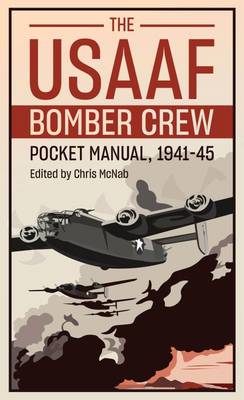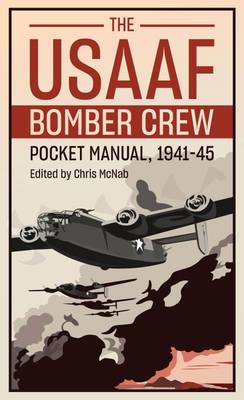
- Afhalen na 1 uur in een winkel met voorraad
- Gratis thuislevering in België vanaf € 30
- Ruim aanbod met 7 miljoen producten
- Afhalen na 1 uur in een winkel met voorraad
- Gratis thuislevering in België vanaf € 30
- Ruim aanbod met 7 miljoen producten
Zoeken
€ 26,95
+ 53 punten
Omschrijving
During World War II the bombers of the US Army Air Forces (USAAF) projected American military might with a destructive force and long reach unimaginable just a decade previously. The B-17s and B-24s of the US Eighth Air Force alone, for example, dropped 670,000 tons of bombs on German infrastructure between 1943 and 1945, flying more than 440,000 sorties, the streaming daylight raids massively contested by the Luftwaffe. B-29 Superfortresses crossed 1,500 miles of Pacific Ocean to unleash high-explosive and incendiary raids on Japan; some of the individual attacks created even greater area destruction than the atomic bombings (also delivered by USAAF crews). But beyond heavy strategic roles, US bombers performed a multitude of other missions, including hunting Axis submarines, interdicting enemy shipping, making low-level precision attacks on bridges and bases, and providing tactical air support to infantry and armor on the ground. While the US bombers dealt out violence, however, they were also prey to a terrifying spectrum of antiaircraft threats, and roughly one in four air crew wouldn't survive to 15 missions.
The men who operated the USAAF bomber fleet were mostly in their late teens to mid-20s, but to survive they would have to rapidly acquire the maturity to master the unique characteristics and capabilities of their aircraft, from twin-engine B-25 Mitchells and B-26 Marauders to the four-engine workhorses of the strategic bombing campaign: the B-17 Flying Fortress, B-24 Liberator, and B-29 Superfortress. USAAF Bomber Crew Pocket Manual, 1941-45 presents a unique collection of US wartime combat aviation documents related to bomber flights and operations. They include doctrinal, training, technical, aircraft-specific and position-specific publications, with topics including long-distance navigation, aerial gunnery, radio operation, formation flying, bomber start-up procedures, and how to use a Norden bomb sight. Collectively, these documents provide an essential insight into how bomber crews performed their individual position roles and worked collaboratively as a crew.
The men who operated the USAAF bomber fleet were mostly in their late teens to mid-20s, but to survive they would have to rapidly acquire the maturity to master the unique characteristics and capabilities of their aircraft, from twin-engine B-25 Mitchells and B-26 Marauders to the four-engine workhorses of the strategic bombing campaign: the B-17 Flying Fortress, B-24 Liberator, and B-29 Superfortress. USAAF Bomber Crew Pocket Manual, 1941-45 presents a unique collection of US wartime combat aviation documents related to bomber flights and operations. They include doctrinal, training, technical, aircraft-specific and position-specific publications, with topics including long-distance navigation, aerial gunnery, radio operation, formation flying, bomber start-up procedures, and how to use a Norden bomb sight. Collectively, these documents provide an essential insight into how bomber crews performed their individual position roles and worked collaboratively as a crew.
Specificaties
Betrokkenen
- Auteur(s):
- Uitgeverij:
Inhoud
- Aantal bladzijden:
- 160
- Taal:
- Engels
- Reeks:
Eigenschappen
- Productcode (EAN):
- 9781636242262
- Verschijningsdatum:
- 30/09/2023
- Uitvoering:
- Hardcover
- Formaat:
- Genaaid
- Afmetingen:
- 127 mm x 198 mm

Alleen bij Standaard Boekhandel
+ 53 punten op je klantenkaart van Standaard Boekhandel
Beoordelingen
We publiceren alleen reviews die voldoen aan de voorwaarden voor reviews. Bekijk onze voorwaarden voor reviews.











